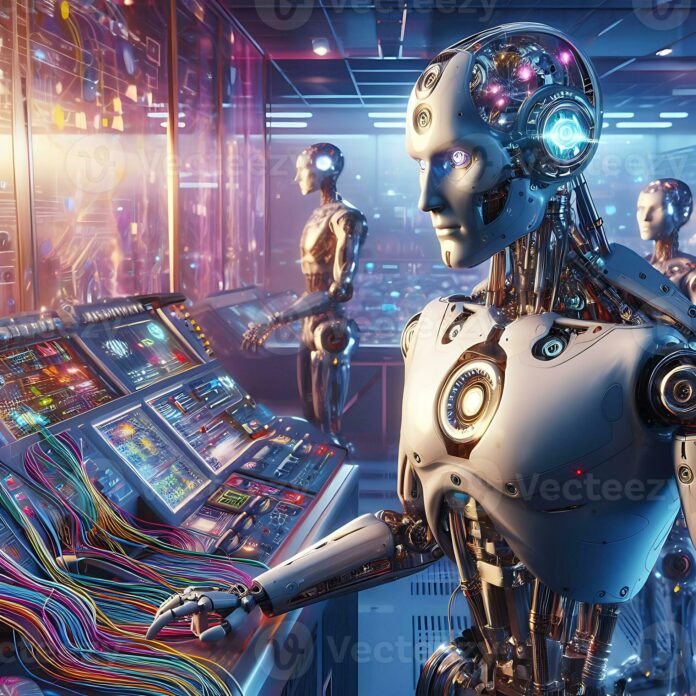Artificial intelligence (AI) is driving significant advancements in autonomous robots and industrial automation, revolutionizing manufacturing processes and operational efficiency. This article explores the latest innovations and applications of AI in robotics, highlighting its transformative impact on industrial automation.

AI-Powered Autonomous Robots
Enhanced Sensory Perception and Navigation
AI enables autonomous robots to perceive and interpret their environment using advanced sensors, cameras, and lidar systems. Machine learning algorithms process sensory data in real-time, allowing robots to navigate complex environments, avoid obstacles, and perform precise tasks with accuracy and efficiency.
Adaptive Learning and Self-Improvement
Deep learning models empower autonomous robots to learn from experience and adapt to changing conditions. Reinforcement learning techniques enable robots to optimize movement trajectories, manipulate objects, and perform tasks with dexterity and reliability, enhancing productivity in manufacturing and logistics operations.
Applications in Industrial Automation
Robotic Process Automation (RPA) and Smart Manufacturing
AI-driven RPA automates repetitive tasks and workflows in manufacturing, such as assembly line operations, quality control inspections, and inventory management. Collaborative robots (cobots) equipped with AI algorithms collaborate safely with human workers, improving production efficiency and workplace safety.
Predictive Maintenance and Asset Optimization
AI analytics predict equipment failures and optimize maintenance schedules based on sensor data and operational parameters. Predictive maintenance algorithms reduce downtime, extend asset lifespan, and enhance operational reliability in industrial facilities, minimizing costs and maximizing productivity.
Latest Developments in AI for Robotics
Swarm Robotics and Multi-Agent Systems
Advancements in swarm robotics leverage AI to coordinate large groups of autonomous robots to perform complex tasks collaboratively. Multi-agent systems enable robots to communicate, share information, and achieve collective goals in applications such as warehouse management and disaster response.
AI-Driven Vision and Manipulation
AI-powered computer vision systems enable robots to recognize objects, interpret visual data, and make informed decisions in real-time. Robotics arms equipped with AI algorithms perform precise manipulation tasks, such as packaging, sorting, and assembly, improving production speed and accuracy.
Future Directions and Challenges
Integration of AI with Internet of Things (IoT) and 5G
Future innovations focus on integrating AI with IoT devices and 5G networks to enable real-time data exchange and decision-making in industrial settings. Edge computing enhances AI capabilities by processing data locally, reducing latency, and supporting autonomous operations in dynamic environments.
Ethical and Regulatory Considerations
As AI-powered robotics advance, addressing ethical concerns such as job displacement, data privacy, and algorithmic bias becomes critical. Regulatory frameworks and industry standards promote responsible AI deployment, ensuring safety, fairness, and ethical use of autonomous robots in industrial automation.
Conclusion
AI’s transformative impact on autonomous robots and industrial automation is reshaping manufacturing processes, logistics operations, and workplace dynamics. By leveraging advanced algorithms and adaptive learning capabilities, AI enhances productivity, efficiency, and safety in industrial environments, paving the way for smarter, more agile manufacturing and automation systems.





